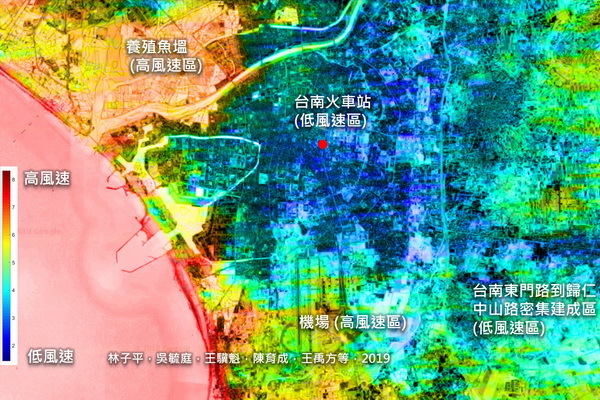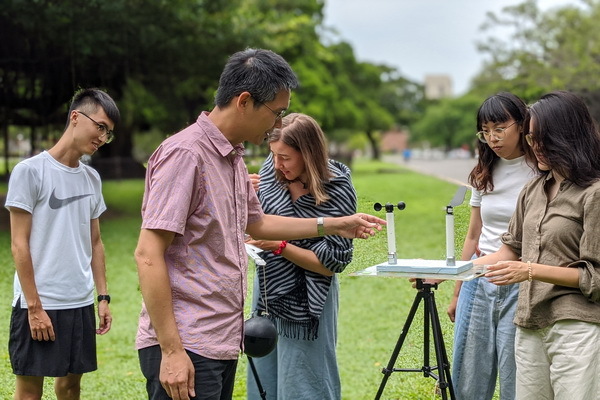Create a Pathway for the Wind: Prof. Tzu-Ping Lin’s solution to the Urban Heat Island Effect
Dense concentrations of buildings in cities lead to heat retention even at night and cause an accumulation of heat in the morning. The “urban heat island effect” (UHI effect) makes cities like stew pots. With the support of the Ministry of Science and Technology, Tzu-Ping Lin, Distinguished Professor in the Department of Architecture, NCKU, leads an international interdisciplinary team dedicated to reducing the UHI effect. Prof. Lin’s team mapped high-resolution climate graphs of the major urban areas in Taiwan in Taipei, New Taipei, Taichung, Tainan, and Kaohsiung. These climate graphs provide precise heat spots in these cities. The team issued an essential solution to the UHI effect: Create a pathway for the wind. Based on this research, the team will cooperate with local and central governments to implement the research results through practical policies.

Prof. Lin’s team mapped high-resolution climate graphs
Prof. Lin also observed a phenomenon where motorcyclists, bicyclists, and pedestrians tend to “hide” themselves in shade to avoid direct sunlight. Accordingly, Prof. Lin’s research on thermal comfort and shading level pointed out that avoiding direct sunlight and maintaining a physiological equivalent temperature (PET) between 26 and 30 degrees Celsius are major factors related to thermal comfort. Prof. Lin is the first scholar to suggest a thermal comfort range in the tropics and subtropics, and his research results were published in Building and Environment.
In addition creating more shade, Prof. Lin proposed a perspective on urban ventilation and challenged designers to “create a pathway for the wind.” Prof. Lin mentioned that cool winds from parks, green areas, and rivers make a significant contribution to reductions in urban heat. Since areas containing these features are surrounded by dense clusters of buildings in cities, the key factor to reducing heat is the design of these buildings. Buildings should not be located front windward but should rather be located sideward to create more space and to widen distances among buildings; therefore, the wind will blow into every corner of cities.

Prof. Tzu-Ping Lin’s solution to the Urban Heat Island Effect
Researchers tend to set thermal comfort in temperate zones as a reference value; thus, most environmental designs include open squares and unshaded grass. “Thermal Comfort Range in the Tropics and Subtropics,” led by Prof. Lin, provided the humid climate zone as a reference value for heat-reducing, ventilation, and shading designs. Research papers written by Prof. Lin are widely quoted by scholars from Germany, Japan, Canada, Australia, Israel, Malaysia, Indonesia, and Sri Lanka. In addition, Prof. Lin’s research on thermal comfort has also been applied on several building designs in Taichung, Tainan, and Kaohsiung cities in Taiwan. Through urban shading design, Prof. Lin predicts that his research team will not only contribute to maintaining a comfortable outdoor environment but also to improving the quality of outdoor activities.
Provider:
News Center
Date:
2020-07-08




